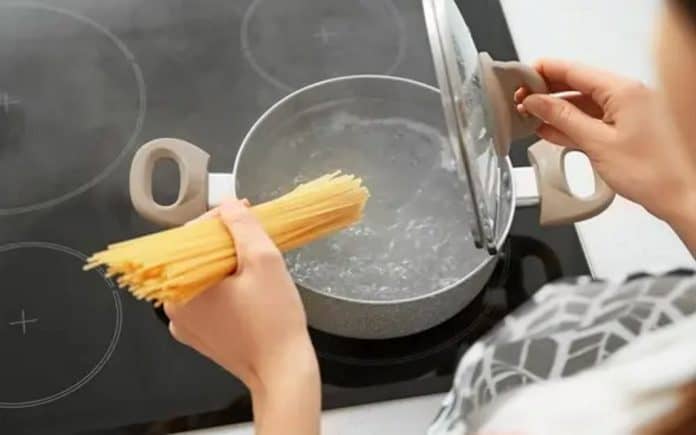In Italian, pasta without salt is named “sciocca” which translates to “silly”, as the addition of salt enhances the taste and texture of this scrumptious dish. Nevertheless, experts caution that adding it too early can be detrimental to our health.
A team of researchers from the University of South Carolina, Columbia conducted a study on tap water and discovered traces of disinfectants that react with salt to generate dangerous byproducts.
These compounds referred to as iodine disinfection by-products (DBPs), may be hazardous to your health, potentially leading to cancer and liver damage while also impairing the activity of your nervous system.
To aid in avoiding these potentially detrimental compounds, the team presented four basic methods to reduce or omit them altogether from your pasta meal. This was reported by British Daily Mail.
Past studies revealed that when wheat flour was exposed to chlorinated tap water mixed with iodized salt, potentially toxic iodine-based disinfectant byproducts could be generated.
In contrast, the scientists didn’t test this with real foods or cooking at home.
Safe steps
Fascinated by this phenomenon, Susan Richardson and her research team sought to explore if it could be seen in food as well, and how home cooks can decrease the emergence of disinfection by-products.
Boil without a lid
After two trials, the team created a scientifically supported approach to detoxing pasta. The steps involve boiling water without a lid on top.
A speedy way to create a volume of steam is to place a lid on a pot, preventing the water vapour from escaping and allowing temperatures to rise at an accelerated rate.

Water filter
Additionally, draining the water traps disinfectants that may have cooked out of it. As a result, the second suggestion was to fully empty all of its contents from your pasta dish.
However, the third and fourth recommendations are the secret to protecting your health.
The most correct way!
After boiling the pasta in salted water, the team suggested that only iodized table salt be added to ensure optimal flavour.
By boiling the pasta uncovered, they explained that most of the chlorine and iodine-based contaminants can be removed since it allows these compounds to evaporate.
To reduce the risk of by-product formation, it’s best to add iodized salt after cooking; however, for salting water before boiling, non-iodized salt is suggested.
After the team cooked spaghetti using only tap water that had been treated with chloramine and salt, the results were analyzed to come up with these recommendations.
For the initial portion of the trial, they followed all steps precisely: filling a pot with water and salt while omitting oil and submerging their pasta.
Reduce toxic amounts
The group analyzed to determine the levels of six iodized tri methane compounds, which can be dangerous if ingested, in cooked dishes and pasta-cooking liquid.
After examining cooked pasta and the water used to cook it, they identified various iodized tri-methane compounds. The amounts of these substances varied significantly based on the conditions of preparation.



